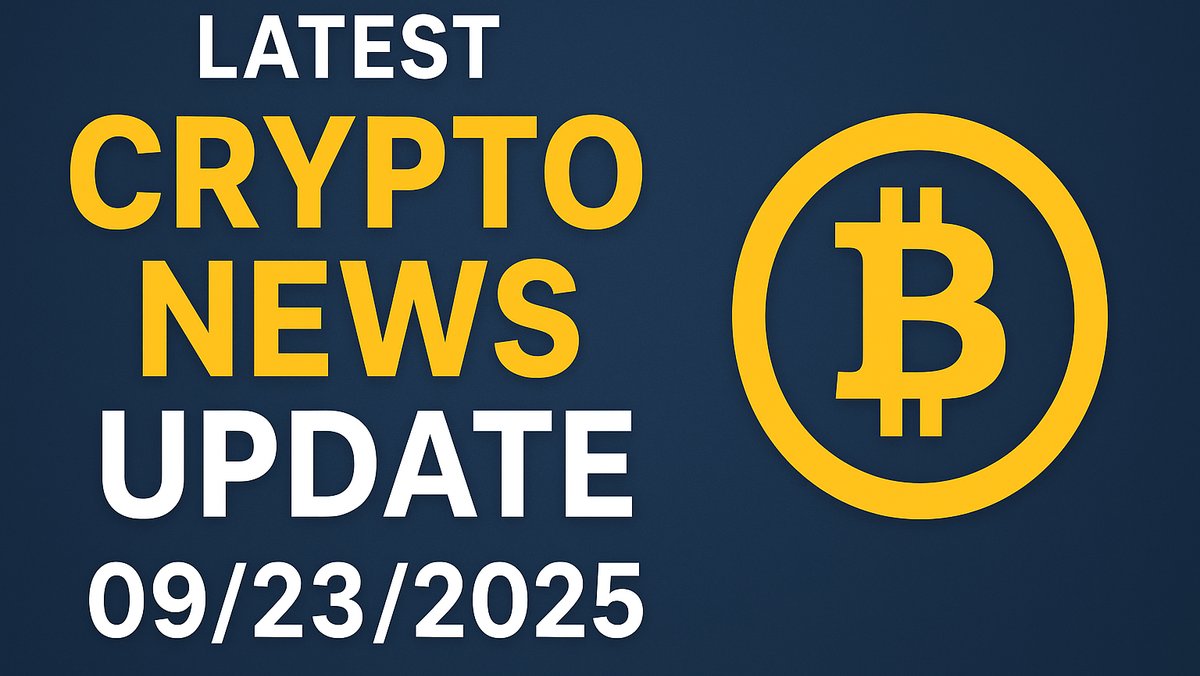Trading Signals – Crypto News, September 23, 2025
Introduction
On September 23, 2025, the crypto market saw a run of positive developments ranging from policy and regulation to corporate actions, interspersed with more cautious signals in technology and society. Governments, traditional financial institutions, and Big Tech all made notable moves around digital assets—another sign that crypto acceptance is deepening. Meanwhile, side stories—from attention-grabbing remarks by public figures to community happenings—added color to the day’s market mood. This report compiles the standout items and unpacks the context and their impact on sentiment.
Optimism from policy frameworks and institutional backing
The biggest bright spot came from the policy front and support by established financial institutions. In Washington, the White House signaled that a crypto market structure bill is likely to pass this year. This represents a meaningful step toward a clearer U.S. legal framework for digital assets. If enacted, exchanges and crypto companies would operate under transparent, codified rules, reducing legal uncertainty, improving investor protection, and smoothing compliance. A durable framework should also lower capital costs, encourage new listings, and strengthen coordination between regulators and banks.
Separately, Visa, Stripe, and Fold announced a Bitcoin credit card that lets users spend USD and receive cashback in BTC. This is a milestone for everyday Bitcoin utility, moving BTC beyond a pure investment vehicle toward a practical store of value integrated with daily spending. That leading financial firms are spearheading the product underscores the seriousness with which they now view the crypto addressable market, and it opens a friendlier on-ramp for millions of potential users.
U.S. regulators also nudged toward a more innovation-friendly stance. The SEC said it would allow crypto firms to bring products to market without the previously burdensome oversight process. For blockchain and fintech startups—long frustrated by procedural hurdles that delayed launches—this is a significant win. A lighter touch should encourage experimentation, shorten time-to-market, and increase the diversity of compliant offerings available to investors.
Meanwhile, institutional adoption narratives stayed in focus. Michael Saylor reiterated a stark framing—“Bitcoin is money. Everything else is credit.”—to emphasize BTC’s monetary properties and long-term role. The message helped reinforce the investment case for Bitcoin as a core treasury asset, complementing the day’s policy tailwinds.
In banking, Morgan Stanley (≈$1.3T AUM) was reported to be preparing to offer BTC and broader crypto trading in H1 2026. If realized, this would be another mainstream bridge between large private wealth and digital assets, potentially increasing institutional participation and liquidity.
Technology and market dynamics: mixed signals
On the technology front, Huawei outlined a multi-year roadmap to compete with Nvidia in AI chips. Analysts highlighted the potential for new compute capacity to spill over into crypto infrastructure—especially as blockchains increasingly rely on high-performance hardware for scaling, zk-proof systems, and on-chain AI/ML verification.
In politics and platform governance, a disclosure by YouTube that the Biden administration had pressured its moderation policies reignited debate over free expression and government influence on social platforms. For crypto, the episode is a reminder that centralized platforms and information pipelines can be swayed by non-market forces—one reason why permissionless rails remain a core philosophical pillar.
Within crypto infrastructure, CZ (Binance) floated the idea of cutting BNB Chain fees by another 50%. Lower on-chain costs can amplify user activity, improve application unit economics, and help DeFi/consumer apps compete with centralized alternatives.
Late-session highlights: community and forward look
Community chatter flared when Sam Bankman-Fried posted a terse “gm” from prison, sparking a mix of memes and debate about reputational overhangs from the prior cycle. Later in the session, the Coinbase CEO struck an overtly bullish note, suggesting BTC could reach $1,000,000 by 2030. While aspirational, such long-dated calls often reflect improving structural conditions: institutional access, clearer rules, maturing market structure, and better consumer UX.
Conclusion
All told, September 23 delivered a constructive blend of policy momentum, institutional interest, and infrastructure improvements. A credible market-structure bill, lighter SEC pathways, payments-native BTC products, and major bank participation all point to a more durable foundation. While tech-policy controversies and platform risks persist, the day’s balance of signals favored medium-term optimism: more rails, more access, and more reasons for mainstream allocators to enter the space.







